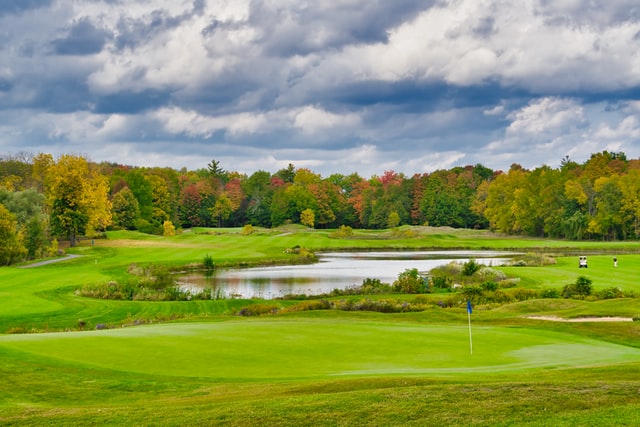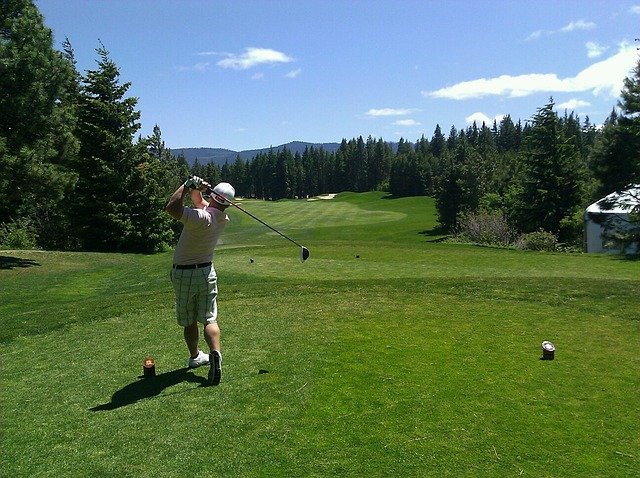What Is Links Golf: Discover the Authentic Origins of the Sport
Links golf is a fascinating and challenging style of the game that many weekend golfers dream of experiencing. As someone who's spent years navigating both parkland and links courses, I'm excited to share the ins and outs of this traditional form of golf. Whether you're looking to improve your game, impress your buddies on your next golf trip, or simply understand what makes links golf special, you're in the right place. We'll explore the unique characteristics, strategies, and rich history of links golf, helping you appreciate why it's considered the purest form of the sport.
Picture this: You've just stepped onto a windswept coastal course, the sea breeze carrying the scent of salt and anticipation. The fairways before you undulate like waves, dotted with pot bunkers and patches of wispy fescue grass. This, my friend, is links golf in all its glory. But if you're like I was years ago, you might be wondering, "What exactly makes this links golf, and why does everyone make such a fuss about it?"
Let me tell you, I used to think golf was golf, no matter where you played. Boy, was I in for a surprise when I first teed off on a links course! The ball bounced and rolled in ways I'd never seen before, the wind played tricks with my carefully planned shots, and don't even get me started on those deep, revetted bunkers. It was frustrating, challenging, and absolutely exhilarating.
That day was an epiphany for me. I realized that links golf wasn't just a different style of course – it was a whole new way of playing the game I thought I knew. It tested not just my skills, but my creativity, adaptability, and mental toughness. And you know what? It made me a better golfer overall.
Now, I'm not saying you need to book a flight to Scotland right this second (though that wouldn't be a bad idea). But understanding what links golf is all about can give you a deeper appreciation for the sport's roots and maybe even inspire you to try some links-style shots on your local course. So, let's dive in and uncover the secrets of links golf together. Trust me, by the time we're done, you'll be itching to experience it for yourself!
The Origins of Links Golf: Where Land Meets Sea
Picture this: you're standing on the first tee of a true links course. The wind whips across your face, carrying the salty tang of the sea. Before you stretches a rugged landscape of undulating dunes, wispy fescue grass, and firm, sandy soil. This, my friend, is where golf began.
Links golf gets its name from the Old English word "hlinc," which refers to the undulating, sandy ground along the coastline. These areas, deemed unsuitable for farming, became the birthplace of our beloved sport. The first golfers in Scotland didn't shape the land to create their courses – they simply played over it as nature intended.
What sets links courses apart is their location and the way they interact with the coastal environment. Unlike the manicured parkland courses most of us are used to, links courses embrace the natural contours of the land. They're typically built on sandy soil near the coast, which provides excellent drainage and creates firm, fast playing conditions.
 On a links course you feel a connection with the spirit of golf.
On a links course you feel a connection with the spirit of golf.The Unique Challenges of Links Golf
Now, you might be thinking, "Okay, so it's by the sea. What's the big deal?" Well, let me tell you, playing links golf is a whole different ballgame. Here's why:
1. The Wind Factor: On a links course, the wind isn't just a factor – it's your constant companion (or nemesis). It can turn a simple 150-yard approach into a nail-biting challenge. I remember one round where I had to aim 30 yards left of the green just to hit the middle!
2. Firm and Fast: The sandy soil and fescue grass create incredibly firm playing surfaces. Your ball will bounce and roll in ways you've never seen before. That 250-yard drive might end up traveling 300 yards – or it might catch a mound and veer off in an unexpected direction.
3. Natural Hazards: Forget water hazards and trees. On a links course, you're dealing with deep pot bunkers, gorse bushes, and thick fescue rough. These natural hazards require careful strategy and precise shot-making.
4. The Ground Game: Links golf often favors keeping the ball low and using the contours of the land. The bump-and-run shot becomes your best friend, especially when the wind is howling.
5. Blind Shots: Many links courses feature blind tee shots or approaches. You'll need to trust your line and commit to the shot, even when you can't see the landing area.
 Links golf can be fun, even when it's windy and wet.
Links golf can be fun, even when it's windy and wet.The Mental Game: Links Golf's Secret Weapon
Here's where links golf really separates the wheat from the chaff – it's as much a mental challenge as it is a physical one. Playing links golf requires:
- Creativity: You'll need to visualize and execute shots you've never even considered before.
- Adaptability: The weather can change in an instant, forcing you to adjust your strategy mid-round.
- Patience: Bad bounces are part of the game. The ability to shake off misfortune and focus on the next shot is crucial.
- Course Management: Knowing when to attack and when to play conservatively is key to scoring well on a links course.
My Experience on the Links
I'll never forget my first round on a links golf course. I stepped up to the first tee, full of confidence after a great range session. I hit what I thought was a perfect drive, only to watch in horror as the wind grabbed it and deposited my ball in a deep pot bunker.
As I stood in that bunker, barely able to see over the steep face, I had an epiphany. Links golf wasn't about perfection – it was about problem-solving. It was about embracing the challenge and finding a way to get the ball in the hole, no matter what obstacles the course threw at you.
That round changed my entire approach to golf. I learned to love the creative shots, to embrace the unpredictability, and to find joy in the journey, not just the score. And you know what? Those lessons have made me a better golfer on every type of course.
Why Links Golf Matters
You might be thinking, "This all sounds great, but why should I care if I'm never going to play in Scotland?" Well, understanding links golf can actually improve your game, no matter where you play. Here's why:
1. It improves your creativity: Learning to play links-style shots can add versatility to your game.
2. It enhances your course management: The strategic thinking required in links golf translates to smarter play on any course.
3. It builds mental toughness: Dealing with the unpredictability of links golf can help you handle adversity in any round.
4. It connects you to golf's roots: Understanding links golf gives you a deeper appreciation for the sport's history and traditions.
Key Takeaways: Mastering the Links
Alright, weekend warrior, let's break down what you need to know to tackle links golf like a pro:
1. Embrace the ground game
It allows you to control the ball in windy conditions, which means you can maintain accuracy even when the breeze picks up.
2. Master the bump-and-run
This shot gives you more control around the greens, helping you navigate the firm, fast conditions typical of links courses.
3. Practice low trajectory shots
They help you keep the ball under the wind, which means you can maintain distance and direction even on blustery days.
4. Improve your bunker play
Links courses often feature deep, revetted bunkers. Solid sand play can save you strokes and frustration.
5. Work on your creativity
Links golf often requires unorthodox shots. Developing a creative approach allows you to adapt to the unique challenges each hole presents.
6. Strengthen your mental game
Links golf can be unpredictable. A resilient mindset helps you bounce back from bad breaks and stay focused on your round.
7. Learn to read the land
Understanding how to use the natural contours of the course can help you position your ball more effectively, leading to better scoring opportunities.
Now, I know what you're thinking – "This all sounds great, Johnny, but how can I put this into practice if I don't have access to a links course?" Great question! Why not challenge yourself to a links-style round on your home course? Try playing more along the ground, embrace the wind instead of fighting it, and focus on creative shot-making rather than just hitting it high and straight.
Ready to take your game to the next level and experience the thrill of true links golf?
Start incorporating these tips into your practice sessions and rounds. Who knows? You might find yourself booking that dream golf trip to Scotland sooner than you think. After all, once you've tasted the challenge and excitement of links golf, there's no going back.
So, what are you waiting for? Get out there and start channeling your inner links golfer!
FAQ: Everything You Need to Know About Links Golf
What defines a links golf course?
What defines a links golf course?
A links golf course is typically located on coastal sand dunes, characterized by firm, fast-draining turf, undulating fairways, deep bunkers, and exposure to coastal winds. These courses follow the natural contours of the land and often lack trees, instead featuring tall, wispy fescue grass in the rough areas.
Why is it called links golf?
Why is it called links golf?
The term "links" comes from the Old English word "hlinc," meaning rising ground or ridge. It refers to the sandy, undulating coastal land where the sport of golf originated in Scotland. These areas were unsuitable for farming but perfect for golf.
What are the main differences between links and parkland golf courses?
What are the main differences between links and parkland golf courses?
Links courses are typically coastal, with firm, fast-draining turf and few trees. They rely on natural hazards like deep bunkers and thick rough. Parkland courses are often inland, with softer turf, tree-lined fairways, and more artificial hazards like water features. Links courses require more creative shot-making and ground play, while parkland courses often favor aerial approach shots.
What are some famous links golf courses?
What are some famous links golf courses?
Some renowned links courses include St. Andrews Old Course in Scotland, Royal County Down in Northern Ireland, Turnberry Ailsa in Scotland, Ballybunion Old Course in Ireland, and Pebble Beach Golf Links in California, USA.
How does wind affect play on a links course?
How does wind affect play on a links course?
Wind plays a crucial role in links golf, often changing direction and intensity throughout a round. It can significantly impact ball flight, requiring players to adjust their strategy, club selection, and shot shape. The wind adds an extra layer of challenge and unpredictability to links golf.
You're probably thinking links golf is only for pros or golf purists, right?
You're probably thinking links golf is only for pros or golf purists, right?
Well, actually, links golf is for everyone who loves a good challenge. When I first played a links course, I was a 25-handicapper, and while it was tough, it was also the most fun I'd ever had on a golf course. It's not about your skill level; it's about embracing the adventure and learning to play a different style of golf.
What types of shots are most important in links golf?
What types of shots are most important in links golf?
The most crucial shots in links golf include low, penetrating drives to combat the wind, bump-and-run approaches to navigate firm greens, and creative short game shots to handle the various lies and contours around the greens. Proficiency in these areas can significantly improve your links golf performance.
How should I adjust my strategy when playing a links course?
How should I adjust my strategy when playing a links course?
When playing links golf, focus on keeping the ball low to minimize wind effects, aim for the front of greens to utilize the firm conditions, and don't be afraid to use the ground game for approach shots. Also, be prepared to adjust your strategy based on wind direction and strength.
You're probably thinking you need expensive equipment to play links golf effectively, right?
You're probably thinking you need expensive equipment to play links golf effectively, right?
Well, actually, links golf is more about skill and creativity than having the latest gear. In fact, many golfers find that their older clubs work just fine on links courses. It's more about how you use your clubs than which ones you have in your bag.
Are links courses more difficult than other types of golf courses?
Are links courses more difficult than other types of golf courses?
Links courses can be more challenging due to their unique features and the impact of coastal weather. However, "difficulty" is subjective and depends on a player's skill set and experience. Many golfers find links golf more unpredictable and thus more challenging, but also more rewarding.
How can I practice for links golf if I don't have access to a links course?
How can I practice for links golf if I don't have access to a links course?
You can practice links-style shots on any course or driving range. Focus on low trajectory shots, bump-and-run approaches, and creative short game shots. Practice in windy conditions when possible, and work on controlling your ball flight. You can also try to incorporate more ground play into your regular rounds.
What is the history of links golf?
What is the history of links golf?
Links golf is the oldest form of the sport, originating in Scotland in the 15th century. The game developed on the coastal linksland, where the natural terrain provided the perfect setting for golf. Many of the oldest and most prestigious golf tournaments, including The Open Championship, are still played on links courses.
You're probably thinking you need to travel to Scotland or Ireland to experience true links golf, right?
You're probably thinking you need to travel to Scotland or Ireland to experience true links golf, right?
Well, actually, while those countries do have some of the most famous links courses, there are great links and links-style courses all over the world. Even if you can't make it to the British Isles, you can likely find a links-style course closer to home to get a taste of this type of golf.
How does the turf on a links course affect play?
How does the turf on a links course affect play?
The firm, fast-draining turf on links courses creates more roll on shots, affecting both distance and direction. This encourages a style of play that utilizes the ground, such as low running shots and bump-and-run approaches. The firm turf also makes controlling approach shots more challenging, as balls are more likely to bounce and roll upon landing.
What should I pack for a round of links golf?
What should I pack for a round of links golf?
When playing links golf, it's essential to be prepared for changing weather conditions. Pack layers of clothing, including a waterproof jacket and pants. Don't forget a good cap or visor to shield your eyes from the sun and wind. Also, consider bringing extra golf balls, as the challenging conditions might lead to a few lost ones!
Journey Through Golf's Roots: Explore Links Courses
This interactive quiz will test your knowledge about links golf, covering various aspects we've discussed in the article. It's a fun way to reinforce what you've learned and maybe even discover some new facts about this traditional form of golf. Give it a try and see how well you understand the world of links golf!
Remember, whether you're a seasoned pro or a weekend warrior, understanding links golf can add a new dimension to your game and appreciation for the sport. So next time you're out on the course, why not try incorporating some links-style shots into your round? You might just surprise yourself – and your playing partners – with your newfound skills and creativity.
Now, are you ready to embrace the challenge of links golf and take your game to the next level? The wind is calling, the fescue is waving, and there's a perfect bump-and-run shot just waiting for you to master it. So grab your clubs, channel your inner Scottish golfer, and let's hit the links!













